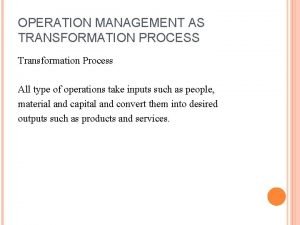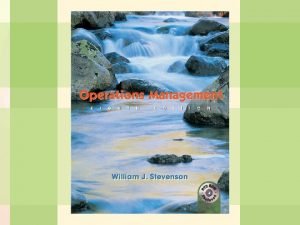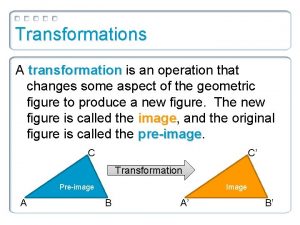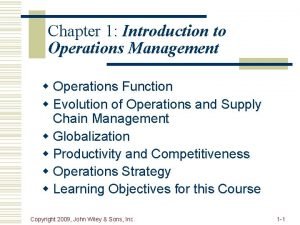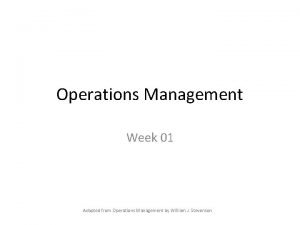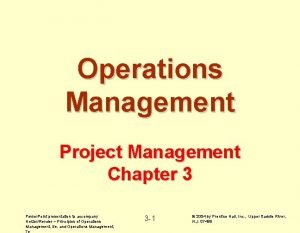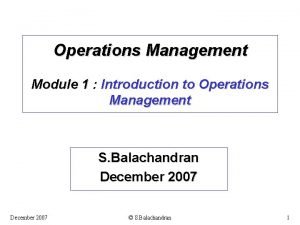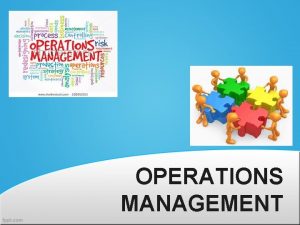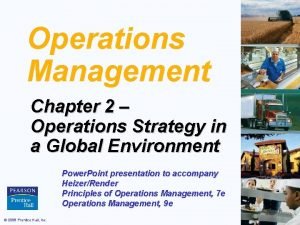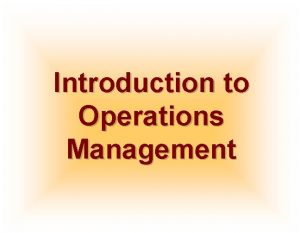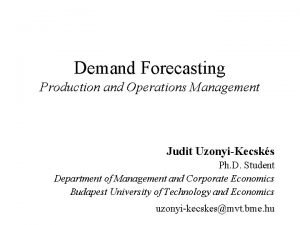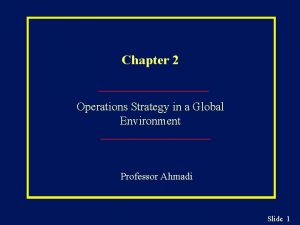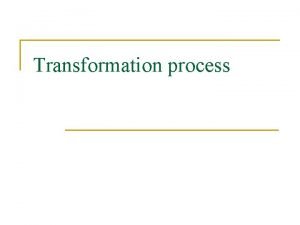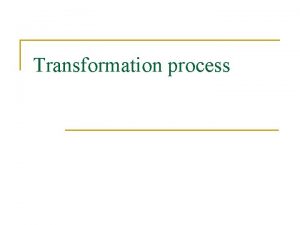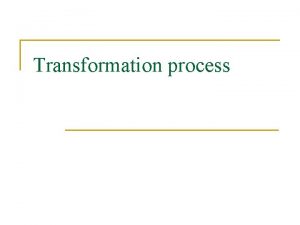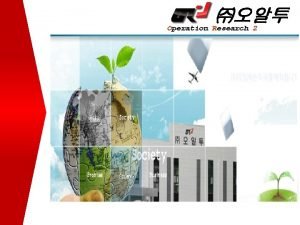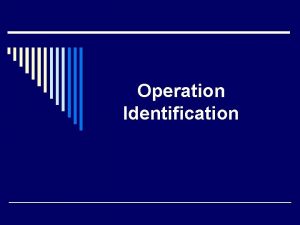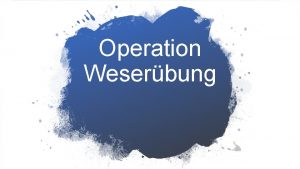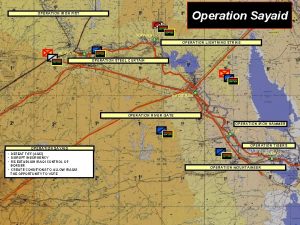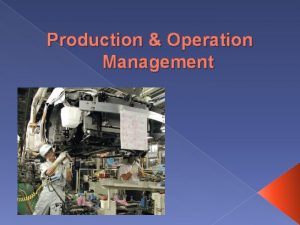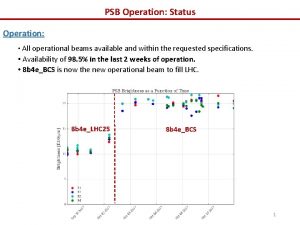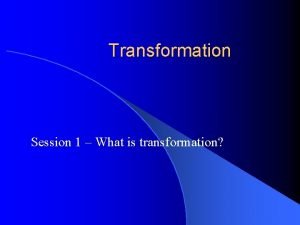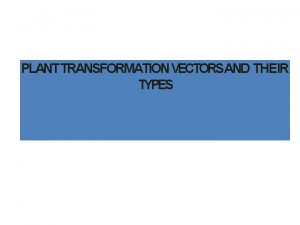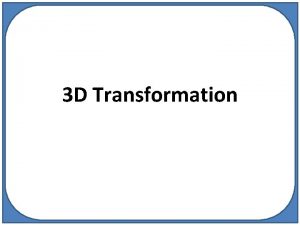OPERATION MANAGEMENT AS TRANSFORMATION PROCESS Transformation Process All















- Slides: 15

OPERATION MANAGEMENT AS TRANSFORMATION PROCESS Transformation Process All type of operations take inputs such as people, material and capital and convert them into desired outputs such as products and services.

KEY COMPONENTS Input Conversion process Output

INPUT These are main resources that are used by the operating systems. They are two categories of input: 1. Transformed resources. 2. Transforming resources.

TRANSFORMED RESOURCES Resources such as information and material, whose status will change as the result of the conversion process.

TRANSFORMING RESOURCES Resources that are used to help the transformation process but their status does not change as the result of conversion process. Example: staff, equipment and building.

CONVERSION PROCESS This is concerned with the design of the operating system, planning and control and improvement activities that are needed for the manufacture and supply of goods and services to customer.

OUTPUT These are products and services produced by the operation to satisfy both the customer requirements and the operation and business strategic objectives in order to remain competitive in the market place.

BENEFITS OF THE TRANSFORMATION MODEL Developing an operation system model is a useful means of identifying and evaluating the key inputs, conversion processes and the input elements for an Operation.

Range of inputs and indication of the more dominating one. Mismatches and areas for adjustment and improvement. Alternative methods or processes available. Labour skills and determination of training needs. Organizational factors and breakdown of responsibilties.

THE STRATEGIC IMPORTANCE OF OPERATIONS

WHAT IS STRATEGY Strategy is a course of action together with decisions on the specification and development of resources required to attain a stated objective.

FORMS OF STRATEGY 1. 2. 3. Corporate Strategy Business Strategy Operational or Functional Startegies

CORPORATE STRATEGY How should the business fulfil its long-term objectives and satisfy its mission? A mission here means a statement of the purpose or the main reasons for the organization existance.

BUSINESS STRATEGY This relates to how an organization intends to compete in the market place. It sets the strategic objectives for various functions in the business, such as marketing, finance, operations and so on. For example, a firm’s competitive strategy may include: Produce at lowest cost (cost leadership) Make products different (differentiation) Focus on one groups of customers (focus)

OPERATIONAL OR FUNCTIONAL STRATEGIES These are concerned with the individual business functions such as personnel, marketing and production can contribute to the achievement of a firm’s corporate and business strategies.
 Transformation process of operations management
Transformation process of operations management Transformation process in operations management
Transformation process in operations management Name a point that is collinear with the given points
Name a point that is collinear with the given points Forecasting operations management
Forecasting operations management A transformation is an operation that
A transformation is an operation that A transformation is an operation that
A transformation is an operation that Operations management transformation process
Operations management transformation process Examples of operation management
Examples of operation management Operations management chapter 3 ppt
Operations management chapter 3 ppt Operations management module 1
Operations management module 1 Introduction to production management
Introduction to production management Operations management chapter 2 solutions
Operations management chapter 2 solutions Reasons to globalize in operation management
Reasons to globalize in operation management Operation management chapter 1
Operation management chapter 1 Demand forecasting operations management
Demand forecasting operations management Operations strategy in global environment
Operations strategy in global environment
